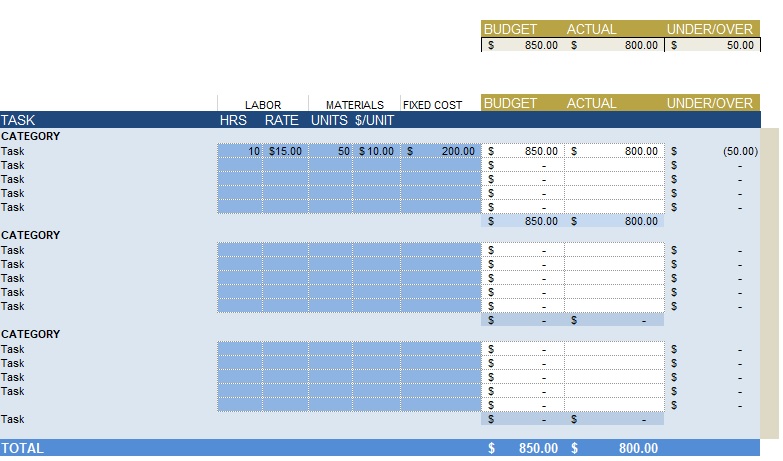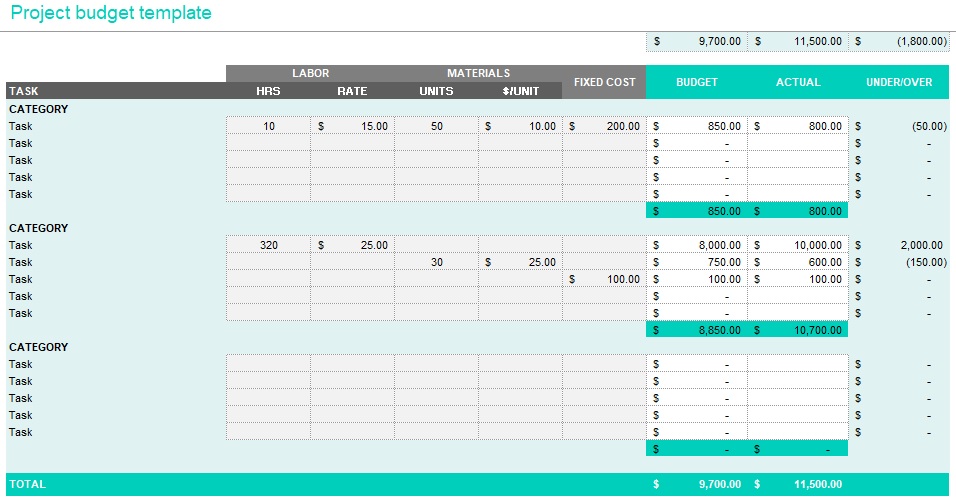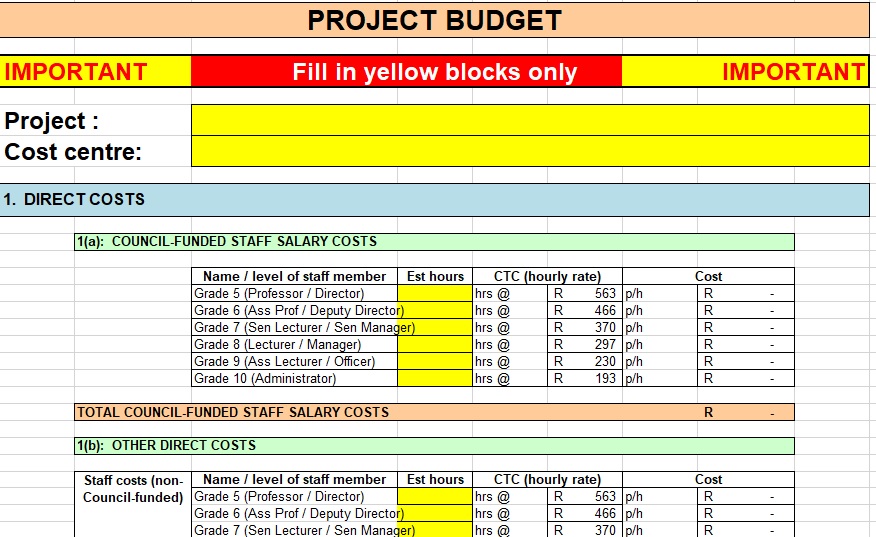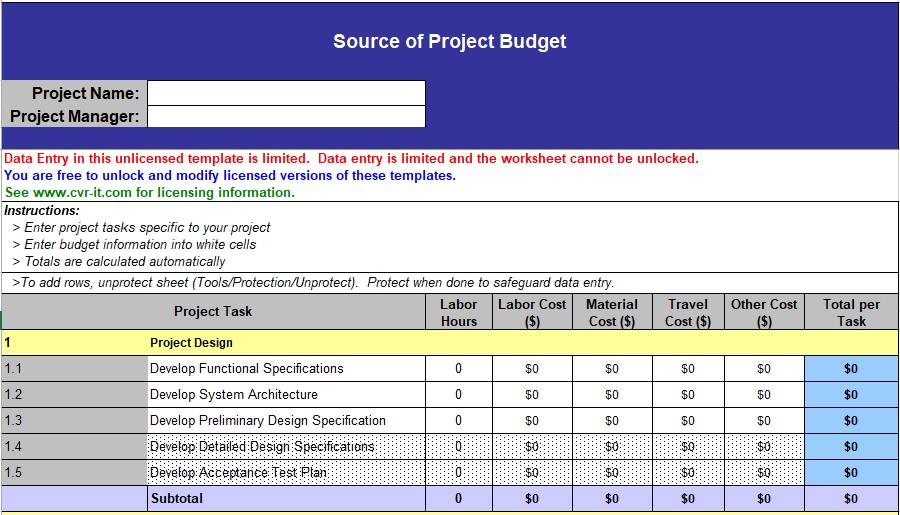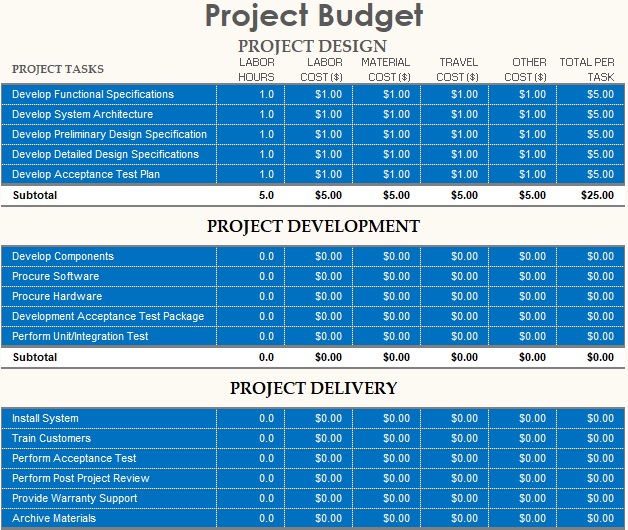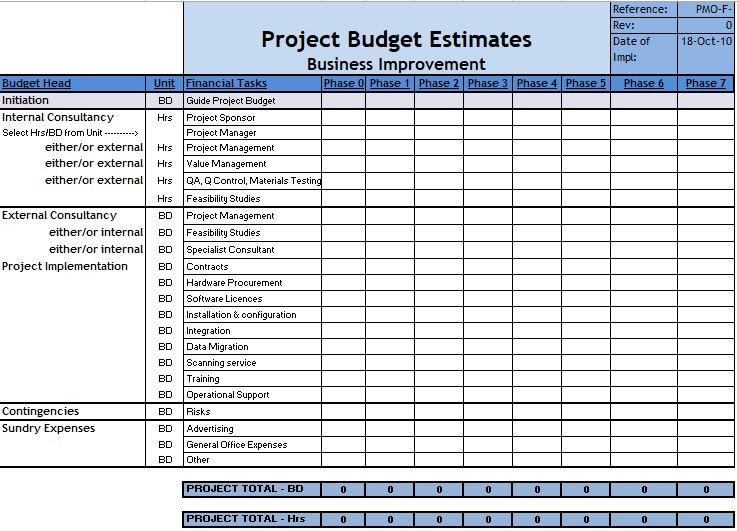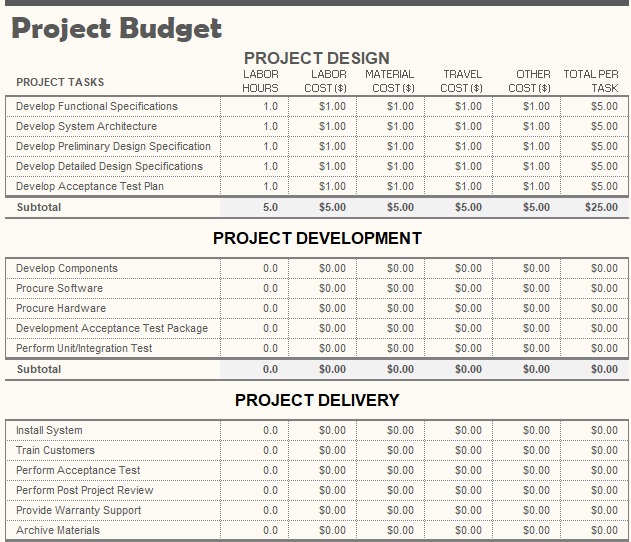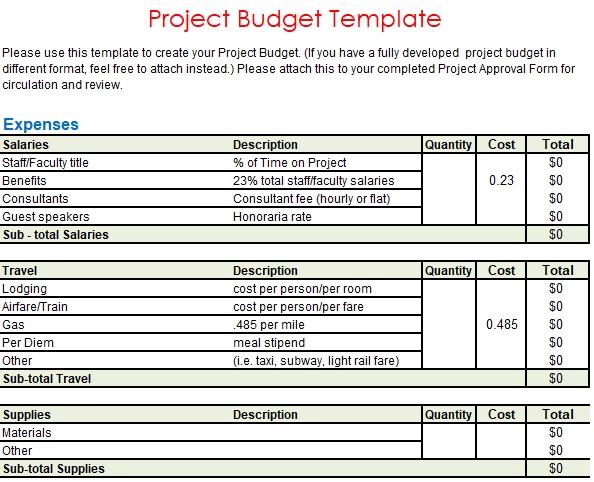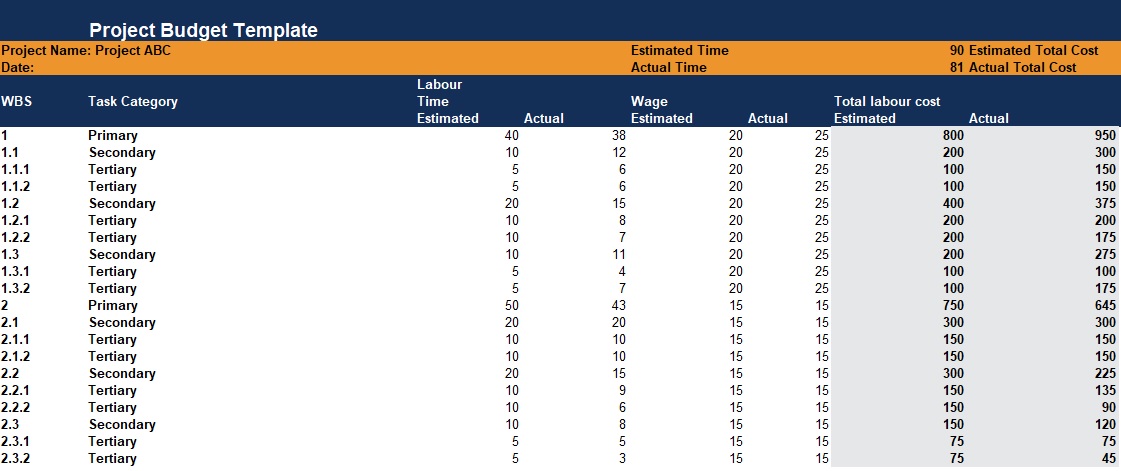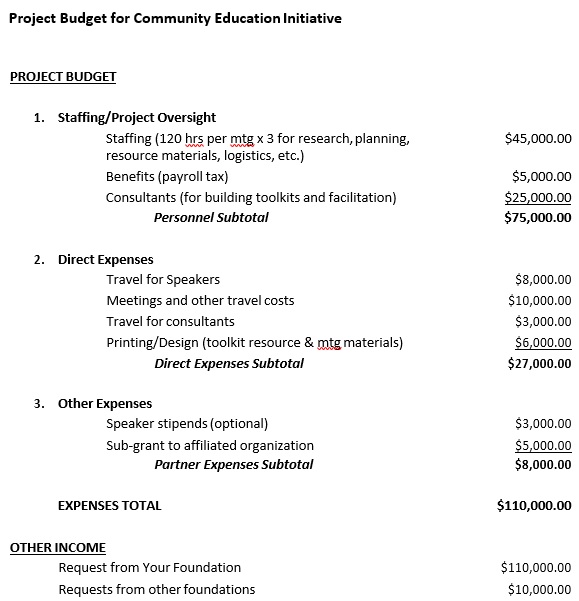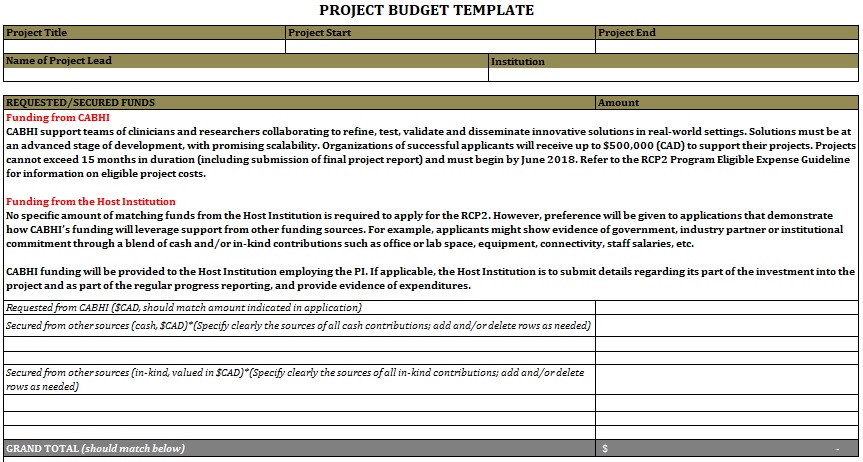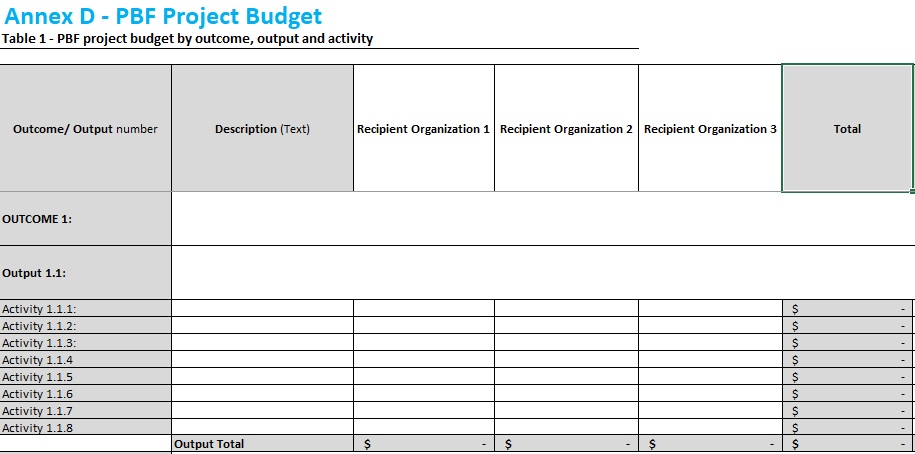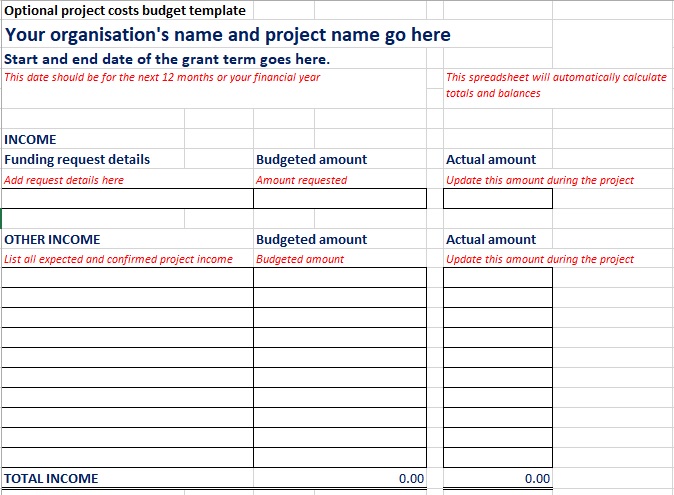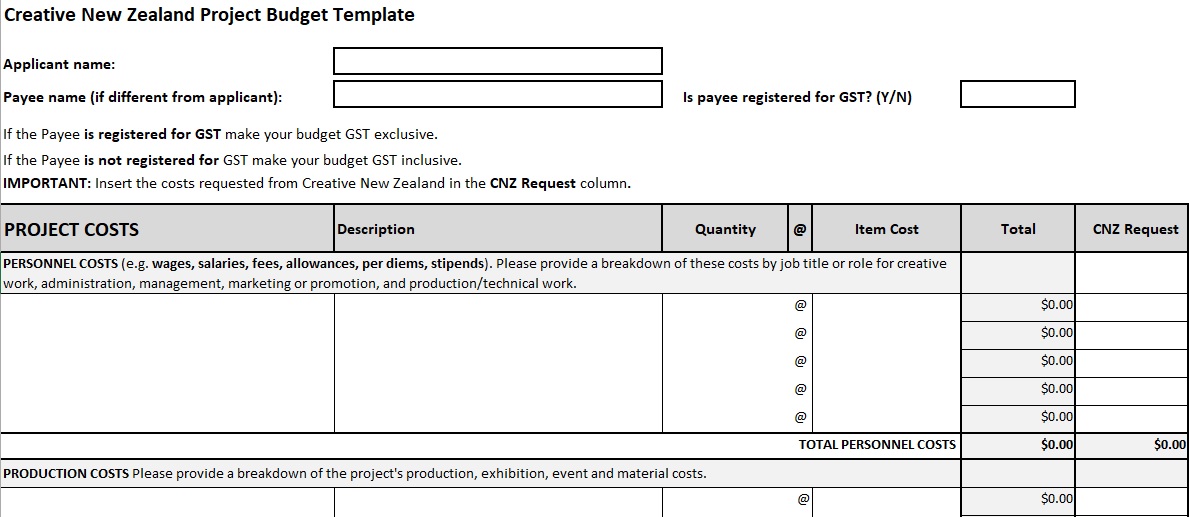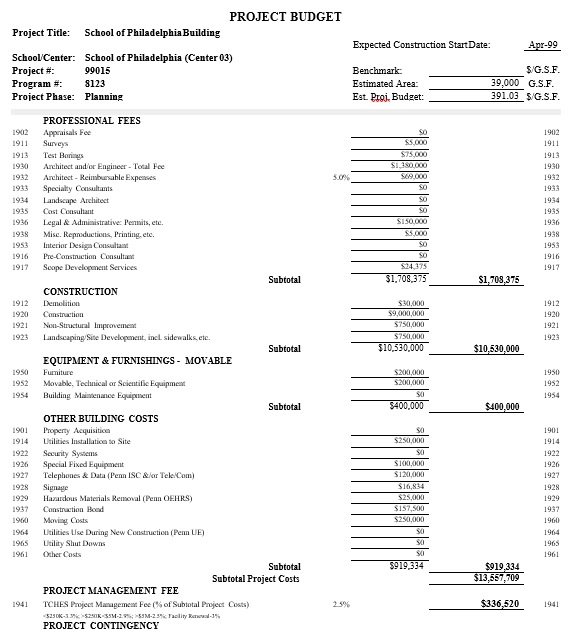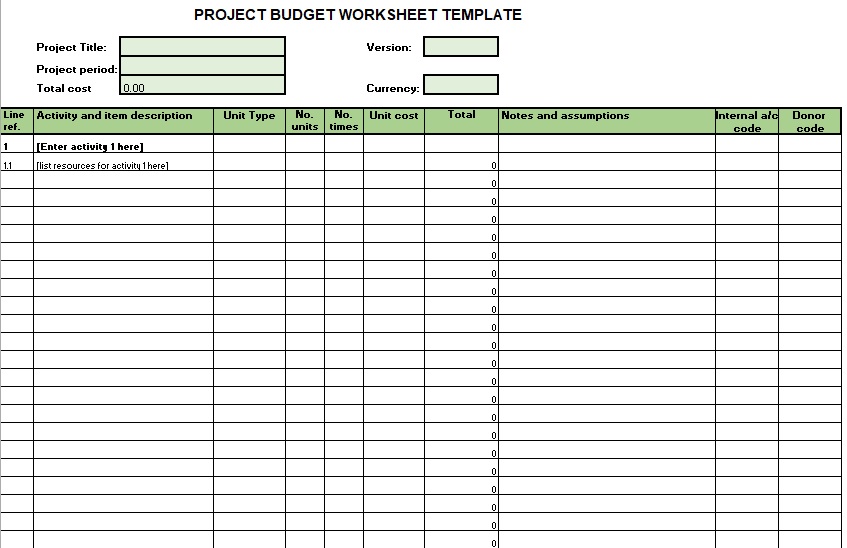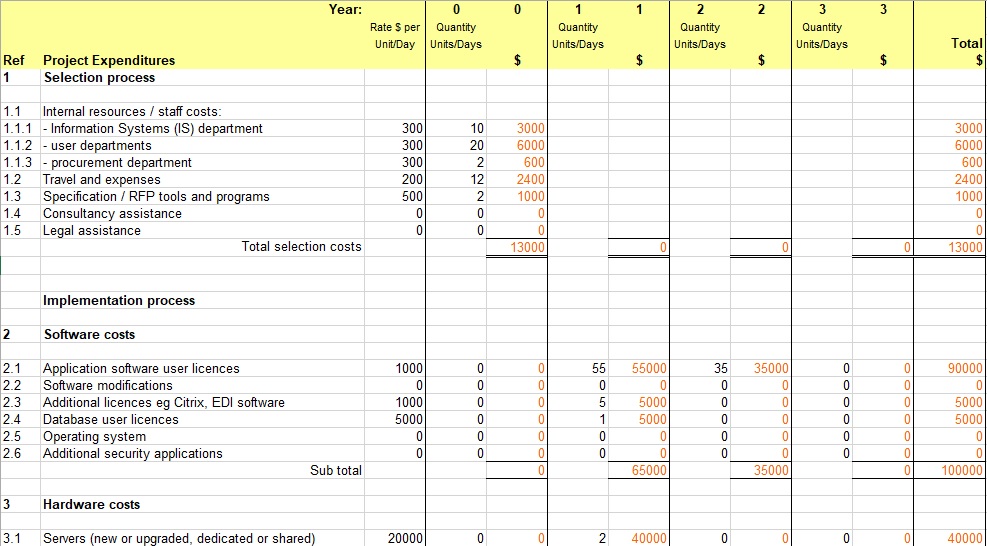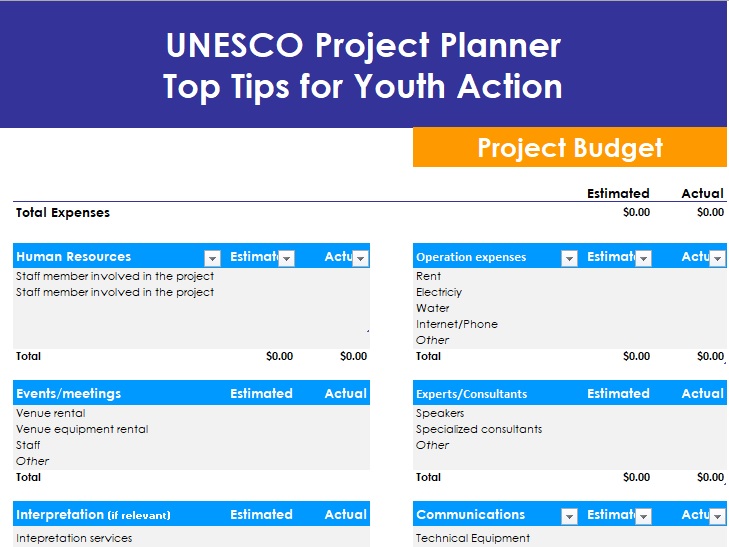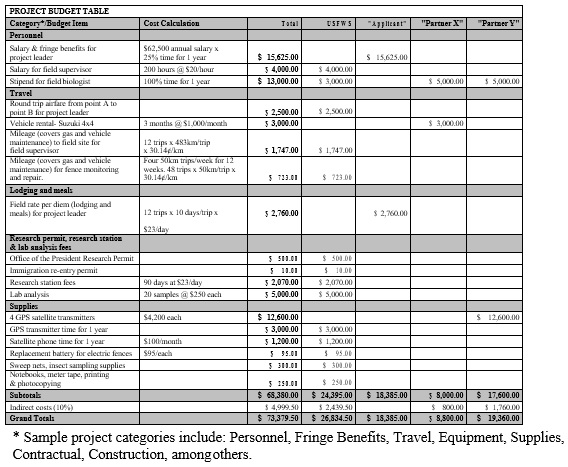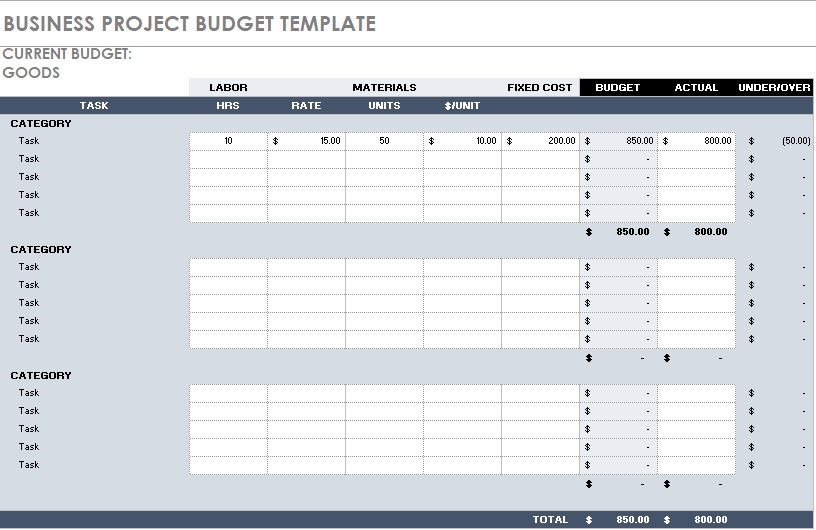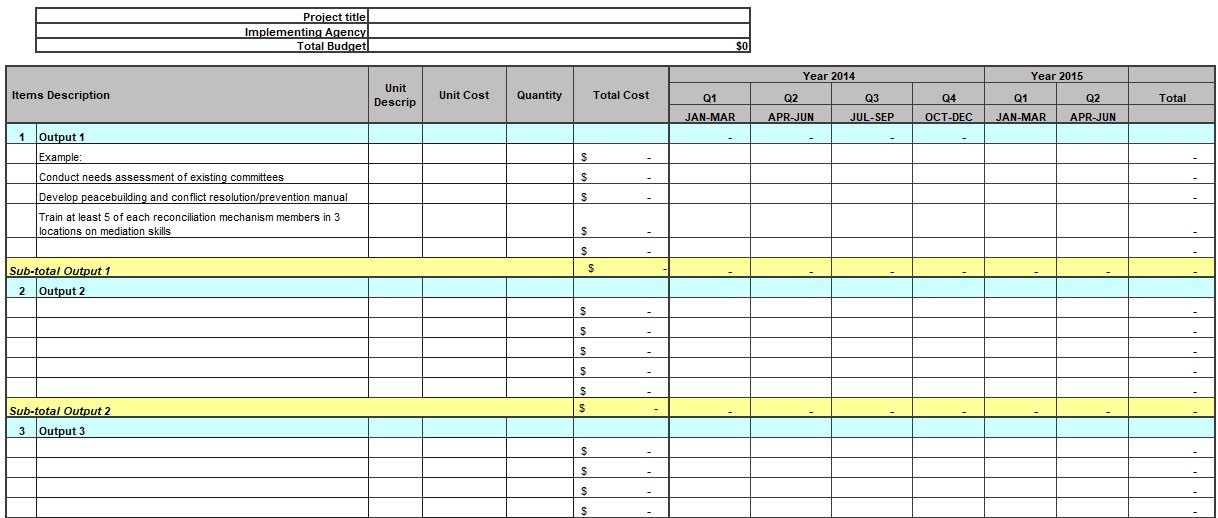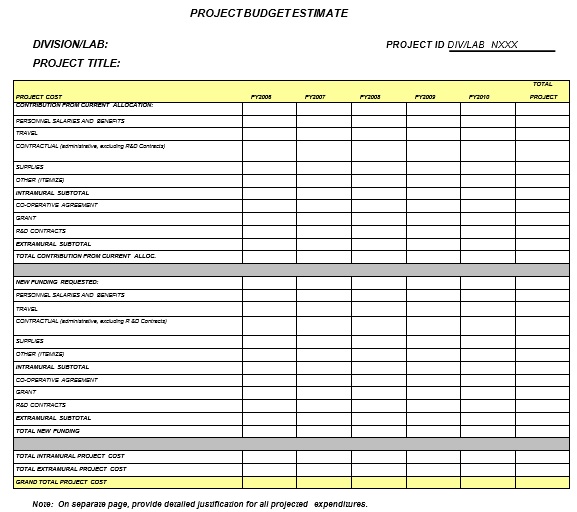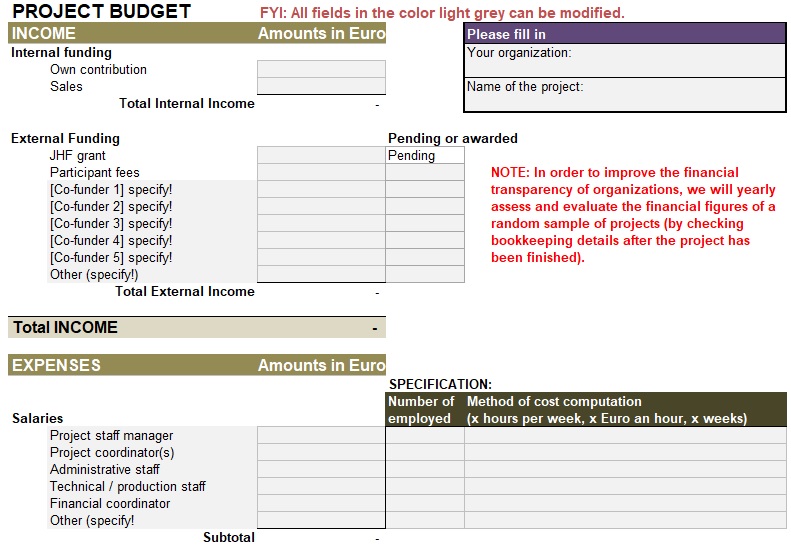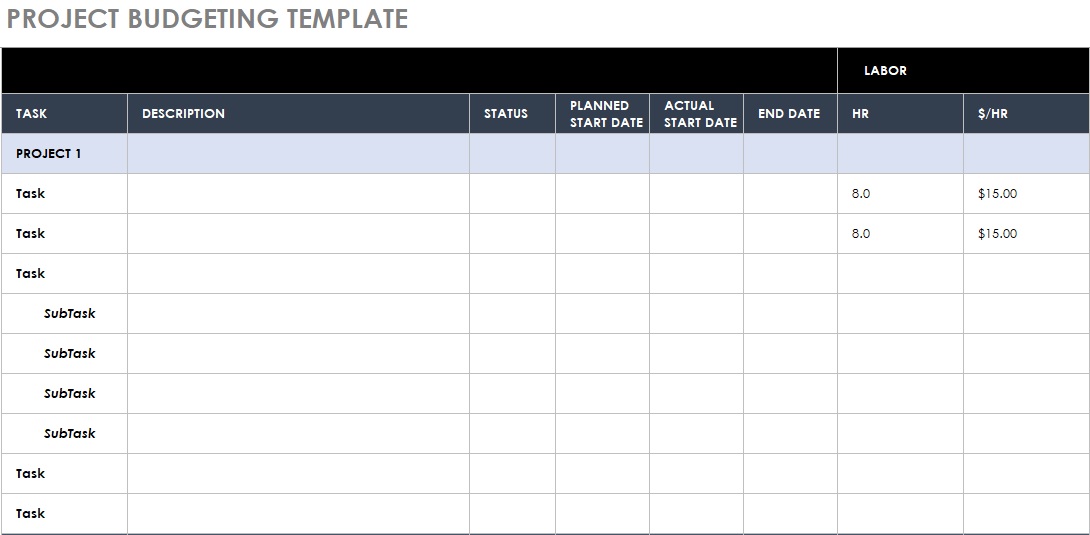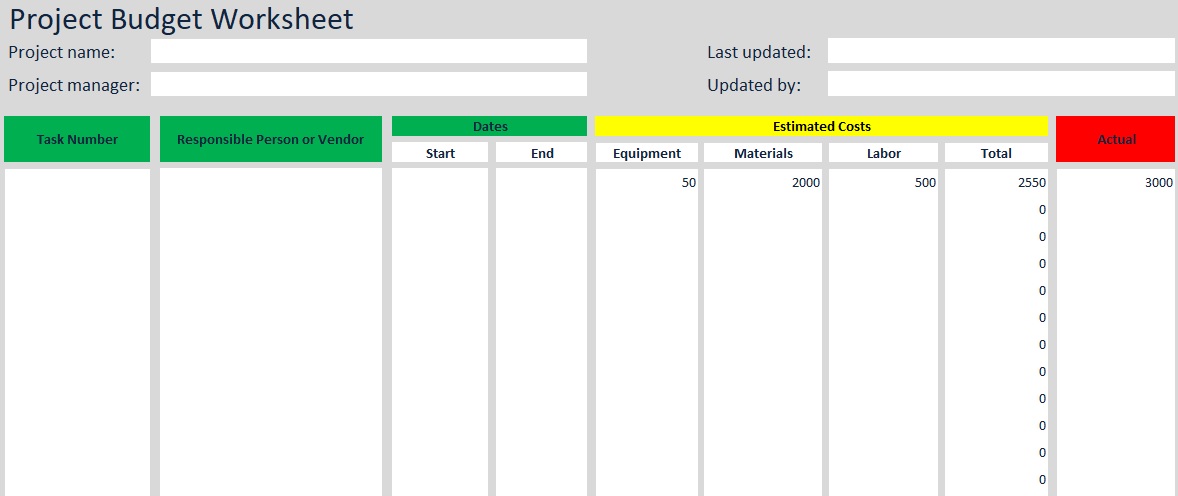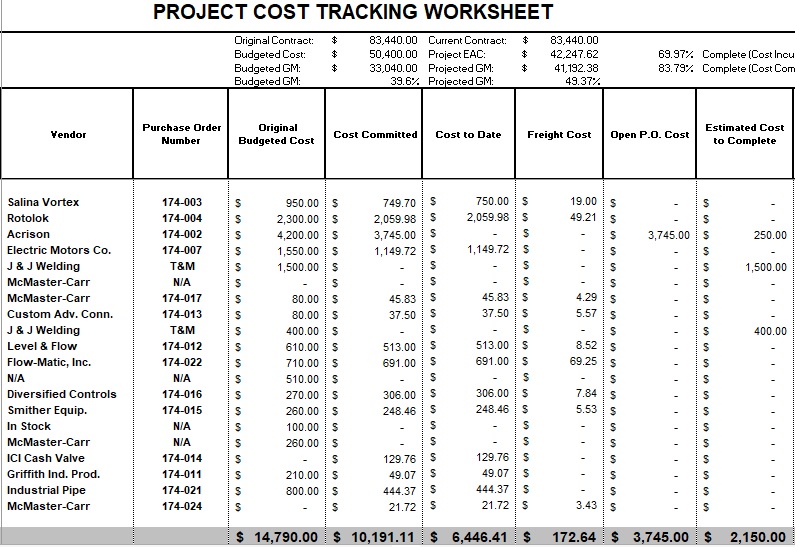You have to create a project budget template in order to succeed in your project. A project budget allows you to monitor the expenses of your project. You should create it at the early stages of your project. Never go over your budget because this places your entire project at risk.
Table of Contents
- 1 What is a project budget template?
- 2 The significance of a project budget template:
- 3 When should you use the project budget template?
- 4 What to include in a project budget?
- 5 How to create a project budget in Excel?
- 6 Things to consider while creating a project budget:
- 7 What are the approaches to estimate a project budget?
- 8 Conclusion:
What is a project budget template?
The project budget template is made by a project manager in order to make an estimate of the total costs of a project. Generally, a comprehensive estimate of all the costs that you may experience before the project’s completion is included in this project management budget template. Its size usually depends upon the size of the project.
The significance of a project budget template:
Projects include various tasks and the accomplishment of all these will result in the overall completion. You require the necessary resources for the completion of a project such as hiring a team, possible contractors, and any other resources you have to pay for. It is important to include all these in your project budget template.
Moreover, creating a project costing template is quite difficult due to the uncertainties that a project could face. But nowadays, you can download templates or use applications like Excel spreadsheets to make your financial structure. Some of the costs included in the projects are much easier to collect such as;
- Consultant fees
- Labor
- Raw materials
- Travel
- Software licenses
Some costs may modify or get carried over from one project to another like;
- General administration
- Telephone charges
- Office equipment
- Office space
- Company insurance
When should you use the project budget template?
Here are a few scenarios in which you should use the project budget template;
Work breakdown structure
Work breakdown structure is used to establish tasks for each client project. When the tasks are done, transfer them in order to set your baseline project budget.
Projecting cost estimation
You should use this template as part of your cost estimation process. It makes a baseline budget for your clients.
Project budget tracking
In order to track actual vs. estimated costs, this budget spreadsheet is used as part of your general project management process.
What to include in a project budget?
You should include the following elements in a project budget template;
Direct costs:
This section forms the bulk of your project. This is because it contains the items that you must pay for or purchase to get your project moving. All these items are very easy to pinpoint. It is important that you should coordinate with your team then brainstorm all of the items you require.
Indirect costs:
These costs in your project keep it running. These are the costs of doing business. However, they aren’t included in your projects.
Capital costs:
Capital costs are the costs that you experience when you buy items to use in your project. Spending capital refers that you are obtaining assets for your company. These items can be anything you will utilize in your project. Furthermore, in purchasing these things, at the end of the day, you will get something tangible. While upgrading existing assets or fixing something broken to use for your project, capital costs are also included.
Operating costs:
These are essential to run your project and team. Operating costs are quite identical to indirect costs. These costs hit your company’s loss and profit accounts so you should account for them differently. On your balance sheet, you can deal with these costs as a different kind of expense.
Project deliverable costs:
These costs refer to the costs involved in creating your project’s deliverables. This includes product breakdown structure or breaking down structure. After that, map out the costs to use in each aspect of work related to the deliverables.
Project management costs:
It includes the costs of running your project. These costs may vary on the basis of who is in charge of project management.
How to create a project budget in Excel?
Let us discuss step-by-step on how to create a project budget in Excel;
Determine the scope of your project:
At first, establish the scope of your project before making an estimate of the costs of it. By creating a Work Breakdown Structure, you can do this effectively. This allows you to gather all of the work involved in delivering your project in a much explained way. In this way, you can easily assess your project’s resource requirements.
Define the resources you require:
The resources you may include to complete your project are the following;
- Staff:
Staff requires the most expensive cost for your project. You may require more team members for your workforce on the basis of the scope. You have to compute the salaries of each team member. Then, add these numbers in your budget.
- Equipment:
For a construction project, this expense may come in the form of machines such as an excavator or a pay loader. So, include all the tools you require for the completion of your project.
- Sales and marketing:
Some projects also involve marketing and sales costs although some don’t include them.
- Training:
Generally, you should introduce a degree of organizational change management in your project. Such change requires training.
- Miscellaneous Items:
If you want the services of an outside company then includes their fees and this thing comes under miscellaneous items.
Assign estimated amounts:
After identifying your project’s resource needs, you can start assigning estimated amounts. You just have to review your list of resources and make an evaluation for each of them. There are also some resources that require to model out the costs. For staffing, it is important because employee salaries may vary from one person to another here.
Make your budget:
Now, you have your estimate after writing down the resources you require for your project and assigned values to them. You should also add a contingency fund as part of your budget. In the next step, compile the estimates in a spreadsheet. You can also use another tool that your company uses for this purpose.
Furthermore, during coming up with your estimated figures, you should consider any assumptions that you made. If your budget spans a specific time period then you also have to include a timeline. This way, you can clearly determine any recurring costs in your budget. When you have all done with your budget, it’s time to review it with your team members and get feedback.
Before implementing it, get your budget approved:
While presenting your project budget to your stakeholders or other business leaders, you have to well prepare to justify the amounts and items. It is the obligation of project manager to oversee it once your budget gets approved.
Things to consider while creating a project budget:
There are three most important things that you must consider;
Cost estimates
In most project management, budgets usually consist of different kinds of expenses. You have to focus on making the best effort to collect the resource requirements for your project accurately. You don’t have too modest with your figures, just think of cost estimates realistically. This makes sure that you won’t exceed over the budget.
Budget contingency
The unknown is probably the most difficult challenge while making a project cost template. There will always some unexpected alterations or delays in your project even if you have the most detailed estimates of resources and costs.
Budget monitoring
Likewise monitoring project activities, you also have to monitor and keep track of the expenses that you have experienced throughout your project.
What are the approaches to estimate a project budget?
There are 5 approaches that you can use to improve the project estimation process and accuracy;
Bottom-up estimation
The best and effective way to prepare a project budget is the bottom-up estimation. You can apply this approach in case you are at the point of making a statement of work. Also, there is disadvantage of this approach as it requires a plenty of time to go down to the smallest detail of the project. According to research, 71% of tasks are created after the project’s start date.
Top-down estimation
Unlike bottom-up estimation, top-down estimation starts with the project budget total. This approach involves breaking it down into smaller parts. You can typically use this approach when you have a fixed price project having the budget set in stone.
Additionally, loosing estimations at the project initiation phase is the main disadvantage of this approach. Before understanding the scope of work and having a project plan, you can’t predict the budget accurately. However, a clear understanding of how each task in the scope affects the initially set fixed price is the key to success with top-down estimation.
Analogous estimation
When you use analogous estimation, you would depend on the budget data and best practices from your previous projects. Then, you can make an opinion regarding how much the current one could cost the client. Depending on Auto schedule that has an algorithm is another way to use analogous estimation.
Parametric estimation
The parametric approach is more accurate than analogous approach. This approach uses cost variables or data points from specific parts of particular projects. After that, they apply them to the current project in order to make more decisions based on data. The advantage of this estimation is that it uses the statistical relationship among historical data and variables. Also, it uses more than one data set.
Three-point estimation
The most sensible and pragmatic technique is the three-point estimation. This method makes use of weighted average on the basis of the best, worst, and most likely case budget scenarios. It motivates you to think from multiple perspectives. With the three-point estimation, the risk of going over budget can get reduce which is the upside of this technique.
Conclusion:
In conclusion, a project budget template has contains all of the financial information regarding your project. This document suggested you to monitor your project budget spreadsheet on a daily basis to make the most of it.

